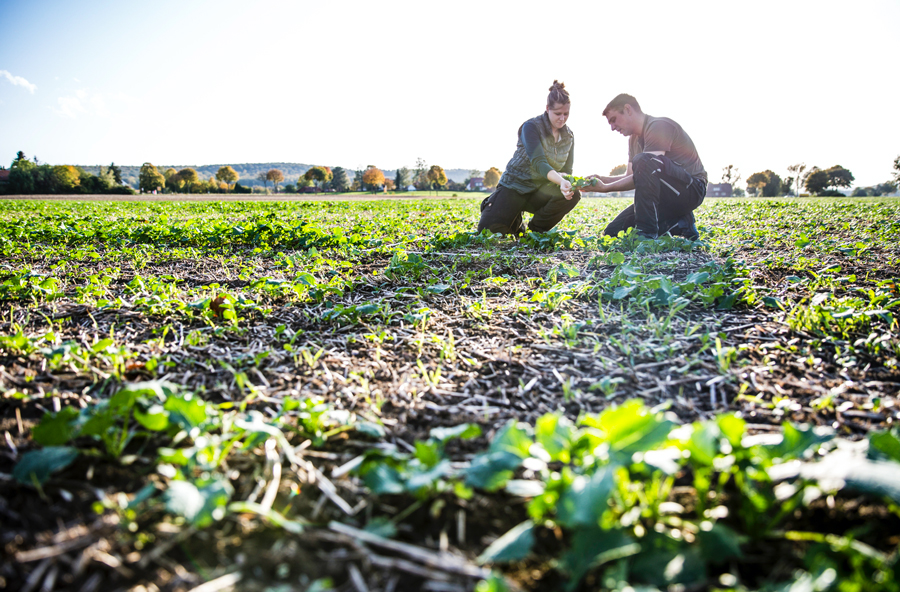Herbicide strategies to safeguard OSR viability
24th September 2020
With many new crops of oilseed rape already in the ground and the remainder of a predicted winter crop of just 300,000 ha following close behind, the current focus is on maximising establishment rates and safeguarding the ongoing viability of crops by reducing the competitive pressure of volunteer weeds. ADAMA’s Bill Lankford shares his thoughts on the latest herbicide advice and active ingredient recommendations.
With many new crops of oilseed rape already in the ground and the remainder of a predicted winter crop of just 300,000 ha following close behind, the current focus is on maximising establishment rates and safeguarding the ongoing viability of crops by reducing the competitive pressure of volunteer weeds. ADAMA’s Bill Lankford shares his thoughts on the latest herbicide advice and active ingredient recommendations.
“Despite being a profitable and effective break crop, and one which enables cereal growers to introduce alternative black-grass herbicides into their rotation, the long-term future of oilseed rape is coming under increasing scrutiny, with the UK’s annual acreage falling year on year,” Dr Lankford explains.
One of the biggest barriers to the crop’s viability – aside from the ban on neonicotinoid seed treatments – is the increasing problem of herbicide resistance, with several grass weeds (black-grass, Italian ryegrass, wild oats) and broad-leaved weeds (Common Poppy, Chickweed, Mayweed) already displaying resilience to a number of key herbicide active ingredients.
“With the successful establishment of oilseed rape crops proving increasingly difficult to achieve – especially in situations where pest damage has the potential to threaten the crop before it really gets going – it can be tempting to withhold the application of herbicide treatments until the crop has shown real potential,” Dr Lankford continues.
“Fortunately, while a combined programme of pre- and post-emergence herbicide treatments will give the very best levels of weed control, the pre-emergence element isn’t necessarily critical. Nevertheless, well-timed post-emergence treatments applied at the optimum growth stage are essential to enable growers to phase herbicide treatments and building a programme of applications which provides cost effective weed control.”
Protecting water quality with early post-emergence treatments
Where oilseed rape has been sown early, Dr Lankford warns that growers may be tempted to delay their post-emergence herbicide application, “simply because there may not be time during the busy harvest, cultivation and drilling season for a pre-emergence treatment to be applied.
“Unfortunately, this strategy has the potential to allow increased weed competition, black-grass to become too big for effective control by late autumn treatments and also poses an increased risk for water quality as later applications are likely to be made when drains are running in October and November. To reduce this risk, growers should consider an earlier application of Crawler (600 g/kg carbetamide) which can be applied from pre-emergence of the crop (post-emergence of many weeds) all the way through to stem elongation or the end of February.
“At the earlier end of this application window, Crawler will not only provide control of grasses and broadleaved weeds but also kick-start to the process of controlling black-grass by targeting the roots of young, shallow-rooted weeds, thereby weakening their ability to grow away from subsequent chemistries.”
Flexible options
In addition to using carbetamide against the first flushes of black-grass, volunteer cereals can also be best controlled in the same time window. Falcon (propaquizafop 100g/l) – a fast-acting graminicide which can be applied from post-emergence up until the point at which oilseed rape flower buds become visible and 90 days prior to harvesting – is a popular choice. It has a flexible label although lower rate options need to be applied at 1-2 leaves of the target weed and if there are concerns that weather or farm workload is delaying treatment then doses need to be at the top end of label rates .
“With such a broad window of opportunity, Falcon adds an extra active ingredient to the herbicide sequence for oilseed rape: although its focus is against volunteer cereals, it’s also a useful contributor to the control of grasses sensitive to the ACCase mode of action,” Dr Lankford continues.
Dr Lankford also highlights the importance of metazachlor as one of the key building blocks for weed control in OSR. “With a wide spectrum of activity against grassweeds and a range of broadleaved weeds, Sultan 50 SC (500 g/l metazachlor) and Rocket (375 g/l metazachlor plus 125 g/l quinmerac) are useful additions to the oilseed rape armoury as they can both be used at pre- and/or post-emergence timings, thus providing a useful starting point for controlling black-grass.
“Using metazachlor at the pre-emergence stage provides the ‘insurance’ of getting an herbicide on early if conditions subsequently turn wet and eradicates weeds early in the crop’s lifecycle thereby allowing the rapeseed crop to establish without the added burden of having to out-compete weeds during the its infancy.”

